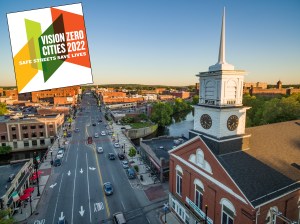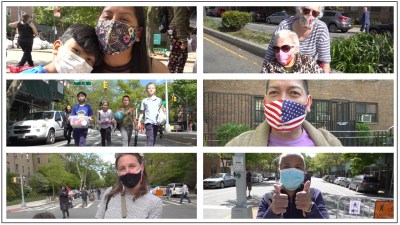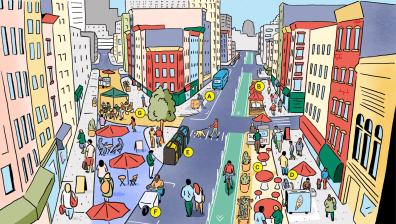LA.Streetsblog: The Joy of Poor Circulation

Every week, KCRW radio’s Marc Porter Zasada sets out to fathom Los Angeles on his show The Urban Man. This week he talks about neighborhoods, how fragile they are and how easily they can be lost to bad traffic engineering:
On
Monday you walked around the block for coffee and croissants, down
where narrow streets filled pleasantly with a confusion of people and
cars. There you idled in front of a flower shop and popped into a tiny
market for apples, where you joked with the beautiful cashier.Then
lo, Tuesday morning you step out your door and find that someone has
widened the street and added an on-ramp. At the end of the block, an
Office Depot looms. Just like that, romance flees. Soon you’re driving
to Costco for apples and croissants. Soon, you forget the beautiful
cashier.What happened? Someone saw the confusion of people and cars, and decided to improve your life with better traffic circulation. Your
little local fling was sacrificed to that greatest of all affairs–the
automobile. Your city squeeze was embraced by the great, gray sprawl of
parking lots and Taco Bells.
The Urban Man goes
on to claim that the best parts of Los Angeles are the neighborhoods
where "traffic circulation" is lousiest. Well-meaning people rarely
understand this. But if you look closely, the market understands this
perfectly. The
most inconvenient neighborhoods for driving have the highest property
values; Beverly Hills, San Marino, Brentwood, the Palisades.
Urbanists have known for decades that the increased traffic speed of one-way streets makes walking less appealing.
And they know that whenever circulation improves, people shop further,
work further, and slowly abandon the love of neighborhood. These roads
would cease being "neighborhood main streets." Most importantly, as the
city spreads and thins, traffic ultimately gets…worse.Back in 1961, the great urbanist Jane Jacobs wrote a book called The Death and Life of Great American Cities,
which explained all this very clearly. And yes, across America, a few
enlightened cities have stopped building expressways and have turned
back to two-way traffic. They’ve learned to let congestion do its
joyful work.Maybe if every
politician were forced to read Jacobs’ book, their eyes would be
opened. Maybe they’d see that a neighborhood with poor circulation is a
neighborhood with hope–not to mention a place that might someday vote
for subway bonds.This morning the Urban Man strolls Pico
near Robertson. This is my own little hood, where despite the immense
wealth surrounding the boulevard, flower shops and cafes struggle. Like the politicians, I’m not sure they realize that improving circulation would make their situation worse, not better.Personally,
I’m thrilled to see drivers waiting in growing frustration for left
hand turns. In fact, I’d like to propose making this area much more
difficult to navigate in an automobile. Today, the Urban Man would like
to formally propose narrowing Pico to one lane in each direction, then
running a trolley right down the middle, from Downtown to the sea. Just
imagine the complications. In fact, such a move might improve not just
my neighborhood, but encourage many happy affairs in what could someday
be a great city for people instead of cars.
Photo: FireMonkeyFish/Flickr


